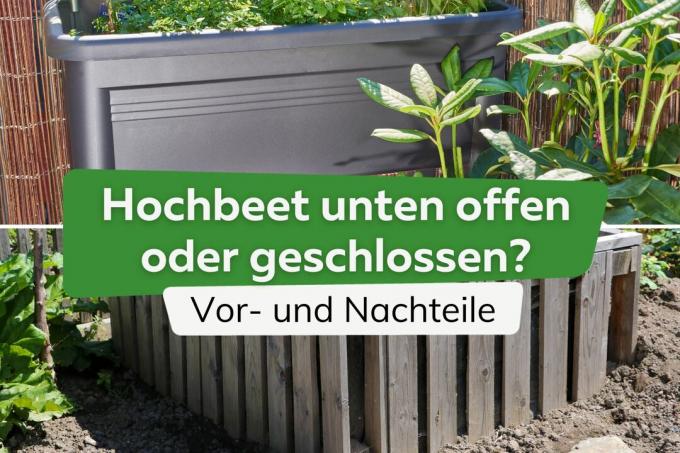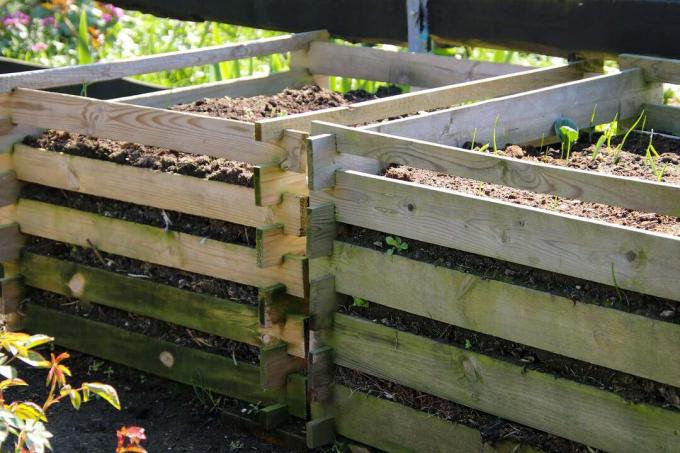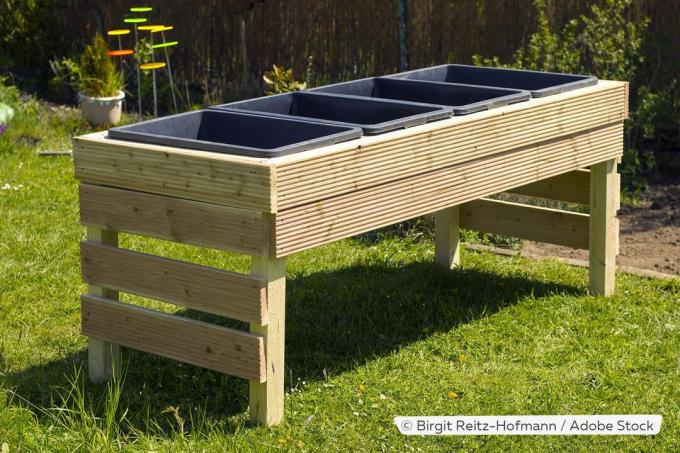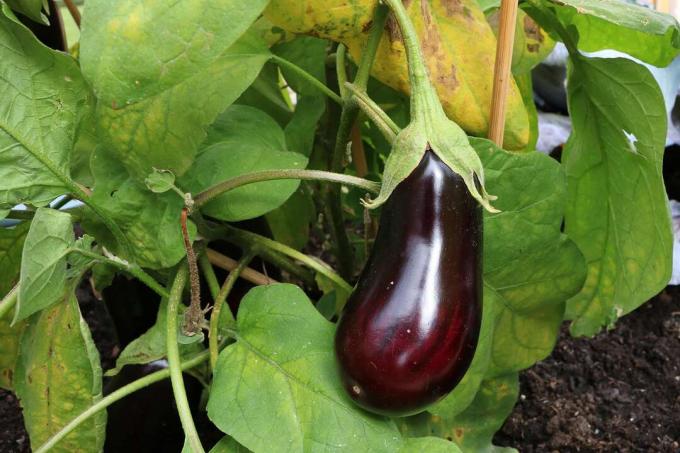
Raised beds are becoming increasingly popular. They promise back-friendly processing and bring high yields. There are both closed and open raised beds. This article explains which variant is better for which purpose.
In a nutshell
- Raised beds are available in an open or closed design
- open allows good drainage and ground contact
- closed ensures more cleanliness and security against vermin
- is therefore better suited for balconies or terraces
Table of contents
- Open raised beds below
- Appropriate planting
- Raised beds closed at the bottom
- Planting of the raised bed closed at the bottom
- frequently asked Questions
Open raised beds below
The classic raised beds in the garden are usually open at the bottom. This means that these are mostly on the ground. This results in both advantages and disadvantages for the contained plants as well as for the gardener.

Advantages
- Water drains off more easily
- Nutrient exchange can take place
- useful soil organisms can get into the raised bed
- Depending on the height of the raised bed, plants with deep roots also have the opportunity to grow into the ground and do not falter in their growth.
Disadvantagee
- Pests can penetrate the raised bed more easily
- Voles quickly find their way in
- unsuitable for balconies and terraces
- Nutrients can be flushed out of the bed
- Changing soil is more complex
Tip: You can create an eye-catcher for your garden in the form of a Raised beds made from pallets can easily build it yourself.
Appropriate planting
All plants that feel more comfortable in a permeable substrate are suitable for a raised bed that is open at the bottom. For example, almost all vegetables. In addition, can be in a raised bed also wonderful Flower or herbs like thyme or cultivate rosemary.
Raised beds closed at the bottom
Raised beds that are closed at the bottom are more suitable than open ones, especially for planting on the balcony or terrace. This makes it easy to cultivate a wide variety of plants without losing a lot of space on the balcony or terrace.

Advantages
- waterproof with dense material such as plastic
- cleaner because there is no ground contact
- Security from voles and other pests
- transportable
- easy construction
Disadvantages of the closed raised bed
- no nutrient exchange
- sensitive to heat
- Soil creatures cannot get into the raised bed
- Water cannot drain properly, waterlogging may occur
Planting of the raised bed closed at the bottom
Plants that require a lot of moisture grow well in enclosed raised beds, including many fruiting vegetables such as tomatoes, zucchini or eggplant. However, a thick drainage layer must still protect the roots from waterlogging. Watering should only be done when the soil feels dry.

Tip: The situation is different with marsh plants. These feel very comfortable in a consistently wet substrate.
frequently asked Questions
Ready-made raised beds are made of wood, plastic or metal. All materials have advantages and disadvantages. Depending on the treatment, wood does not last as long as metal or plastic. Plastic can become brittle and cause problems when it comes to disposal. Metal is expensive and must be protected against rust, plus it heats up a lot in the sun. There is also the possibility to register Stone raised bed to build yourself, but the classic made of wood is best.
If there are voles in the garden, it makes sense to protect the raised bed from voles as soon as you set it up. To do this, fine-meshed wire is laid out on the floor and pulled up and fastened to the walls. This is easiest to do with raised beds made of wood.
Raised beds require a lot of material, more than a cubic meter depending on the dimensions. Coarse plant material, such as branches and twigs, is suitable as the bottom layer. Above that comes coarse compost or Damn. The next layers become finer and finer, up to the top layer, which should consist of a 20 cm thick layer of nutrient-rich soil.

